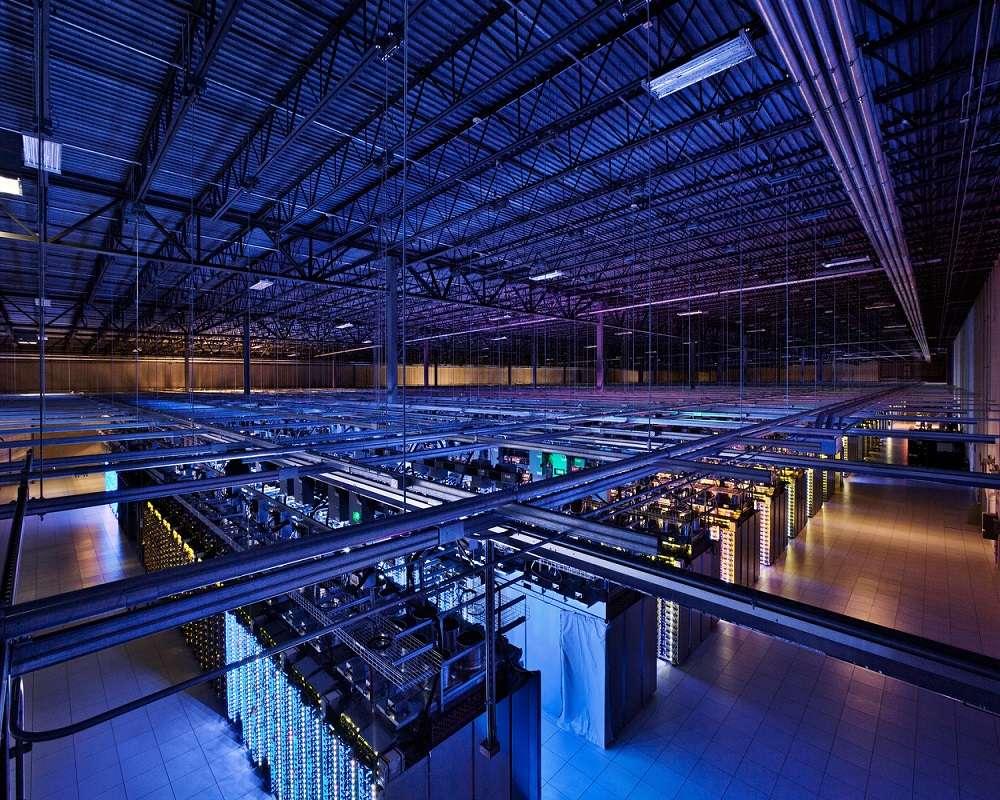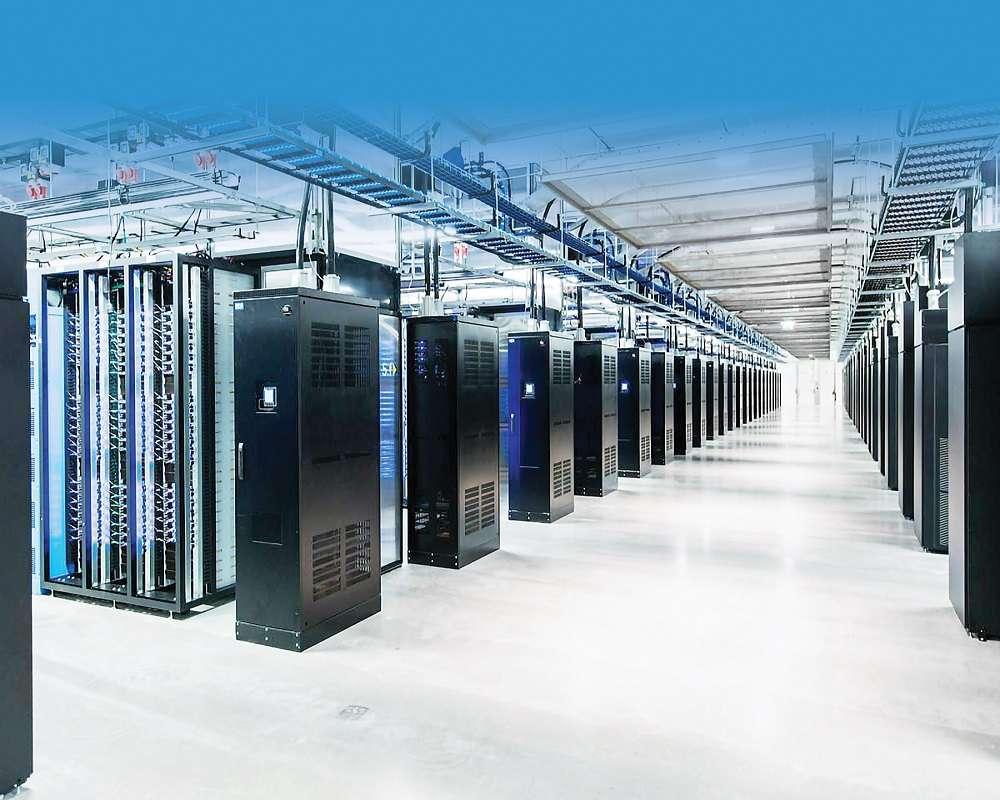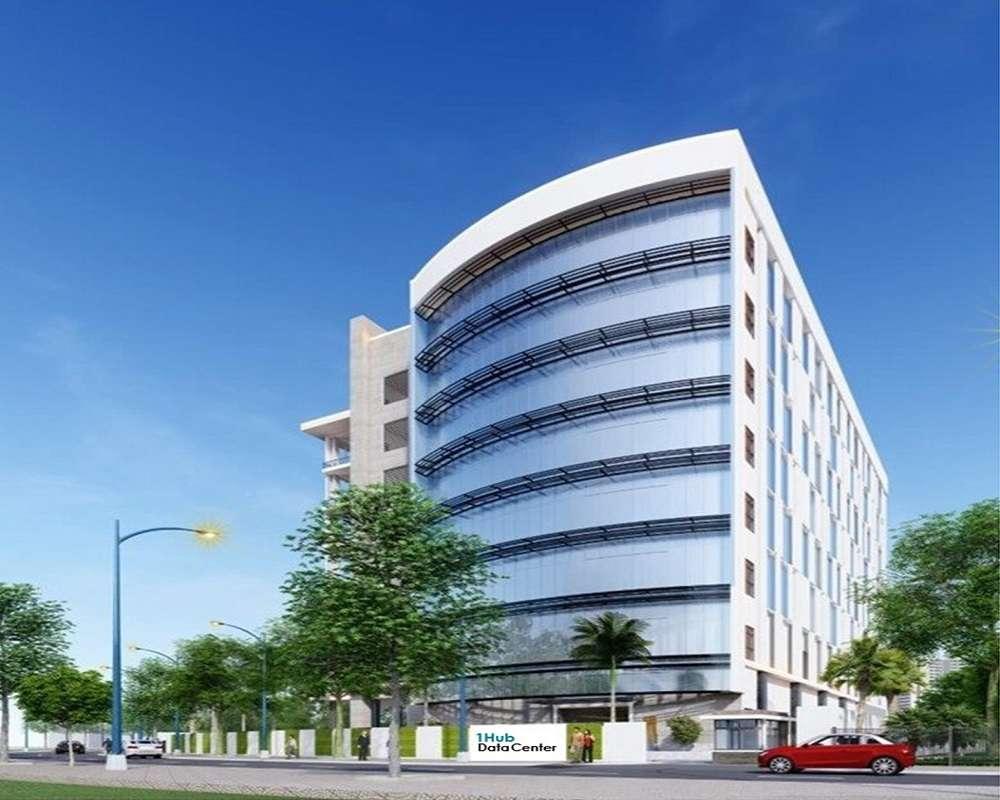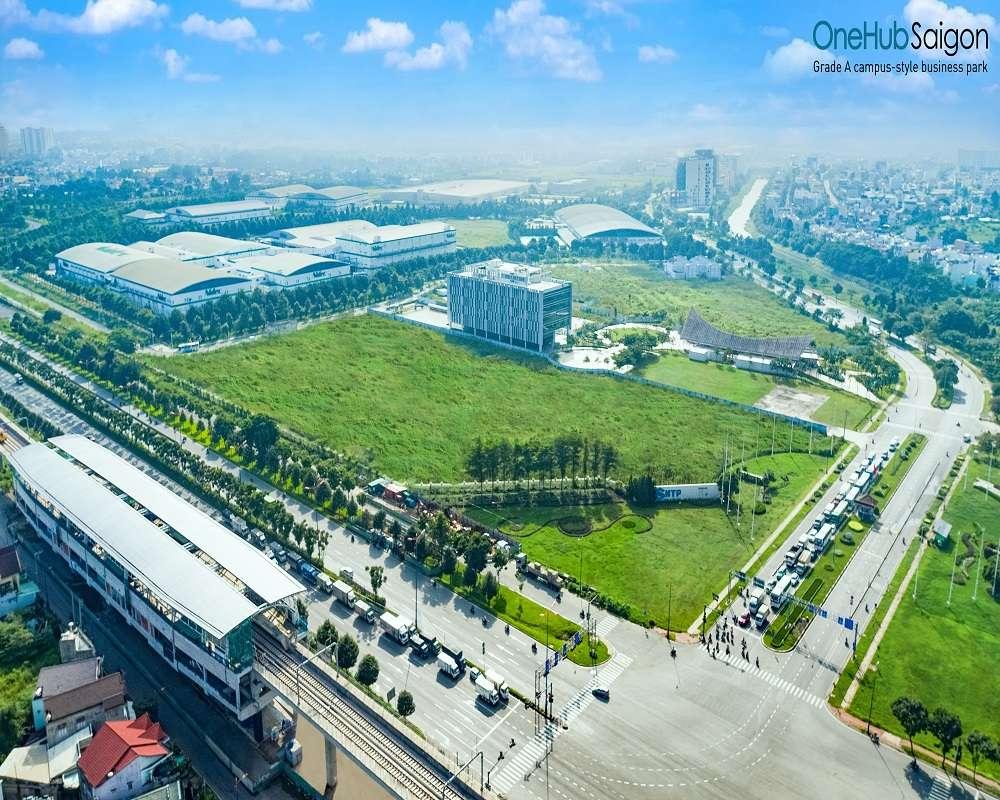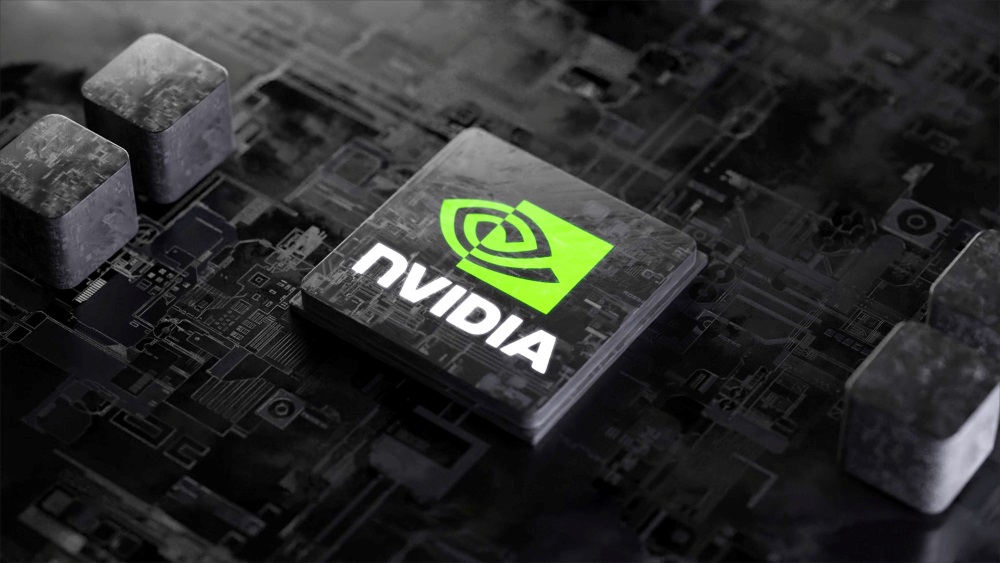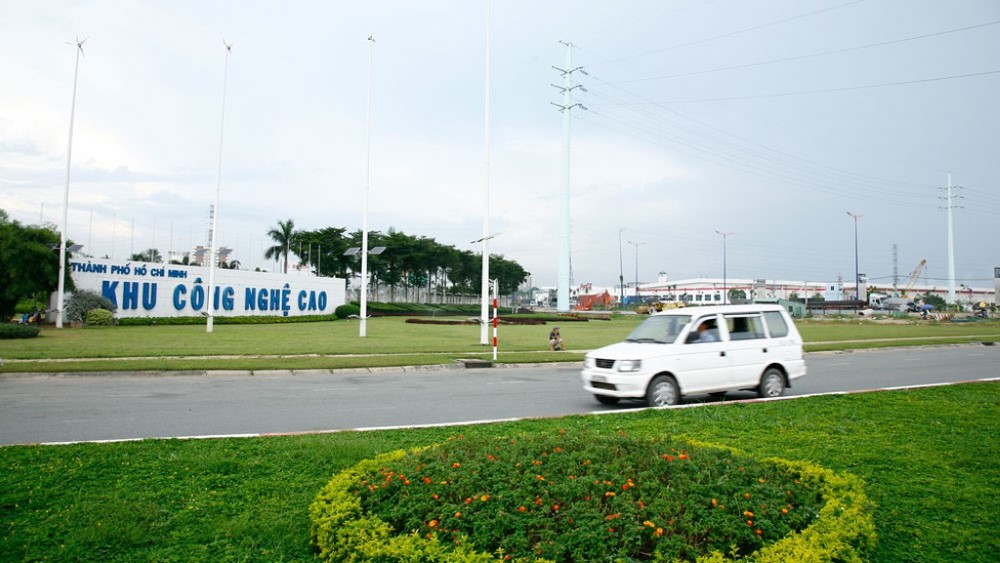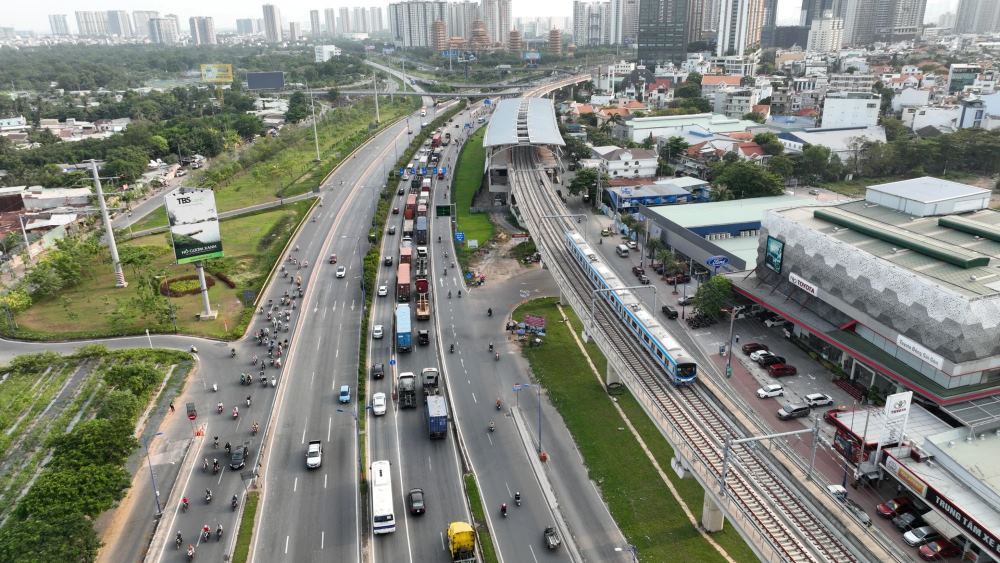1Hub Data Center – Tier 3 Data Center locates in Saigon Hi-Tech Park
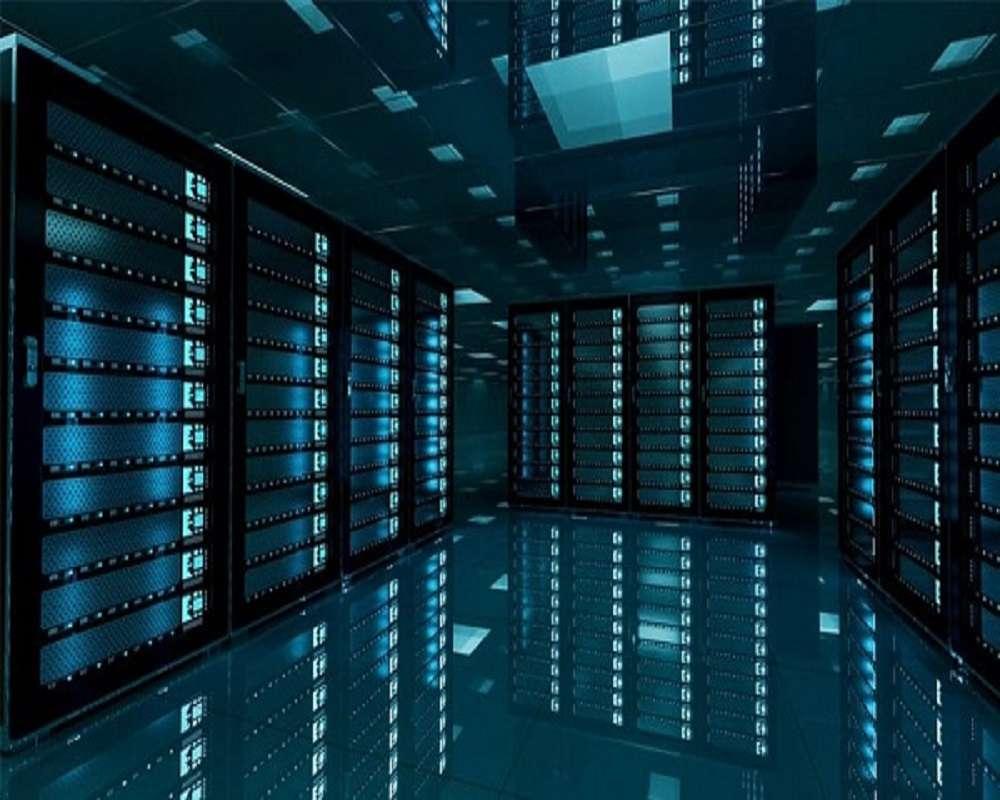

Data Center in Saigon Hi-Tech Park – 1Hub Data Center has firmly established its position and Tier 3 standard in the field of data management and service provision. With a modern and reliable infrastructure system, 1Hub Data Center not only ensures the security and stability of customer data but also guarantees flexibility and readiness to handle increasingly advanced technological demands. Let’s delve into the details of the Tier 3 standard and its significance in data management at 1Hub Data Center in the article below.
Inside a Data Center
Understanding data centers
What is a data center?
Definition
A data center system is a physical facility designed and constructed to store, manage, and process data for organizations, businesses or government entities. It is a centralized location of servers, storage systems and network equipment dedicated to data management and processing.
Functions
A data center serves several critical functions to ensure stability, safety, and high performance in data storage and processing. Here are the primary functions of a data center:
- Data storage: A data center provides space for an organization to store data using advanced methods and technologies. The storage system includes physical or virtual servers, RAID systems, hard drives, and other storage devices to ensure data is protected and readily available when needed.
- Data processing and computation: Data centers provide high computational power to handle complex tasks such as scientific computing, artificial intelligence, data analytics, and big data processing. Cloud computing services are often deployed within data centers.
- Network management: Data centers ensure network management and control by offering services such as IP addressing, bandwidth management, firewall protection and network access control. This helps safeguard the network as well as ensure efficiency in communication between various servers and devices.
Functions of a Data Center
- Operating system management: Data centers typically deploy an uniform operating system on servers to simplify system management and maintenance. These operating systems are often configured for 24/7 operations and provide management features such as updates, monitoring and system issue resolution.
- Data security: Data centers ensure the security and confidentiality of customer data through methods like firewall systems, SSL certificates, access control and network attack prevention. Data centers also have security personnel and physical protections like surveillance cameras and safety door systems.
- Data backup and recovery: Data centers usually implement regular data backup measures to ensure data is not lost and can be promptly recovered in case of incidents. Backup methods may include data backups at multiple locations, synchronous backups, and offline backups.
Tier classification system of data centers
Tier classification system is used to evaluate the uptime infrastructure performance of data centers. Data centers are categorized into four levels, ranging from Tier 1 to Tier 4, with Tier 4 achieving the highest uptime of up to 99.995%. These standards are defined by the international ANSI/TIA-942 standard, focusing on the design and construction of data centers. Core elements within this standard encompass power systems, cooling systems, network systems, fire suppression systems, security systems, and management systems.
Furthermore, data centers need to comply with the principles and standards of Green Data Centers to minimize the environmental impacts and reduce energy consumptions. Simultaneously, they must ensure easy scalability and avoid technological obsolescence for at least the next 5 years.
According to the Uptime Institute, there are four levels of data centers as follows:
- Tier 1: This is the lowest tier of data centers, with a single path for both power and cooling systems. There is little to no redundancy. Tier 1 has an uptime of 99.671%, meaning it can experience downtime of up to 28.8 hours per year. Tier 1 is typically used by small businesses or those with no high requirements for system continuity.
- Tier 2: Slightly higher than Tier 1, Tier 2 still features a single path for power and cooling systems but includes some redundancy. Tier 2 has an uptime of 99.741%, allowing for up to 22 hours of downtime per year. Tier 2 is often used by medium-sized businesses or those with moderate uptime requirements.
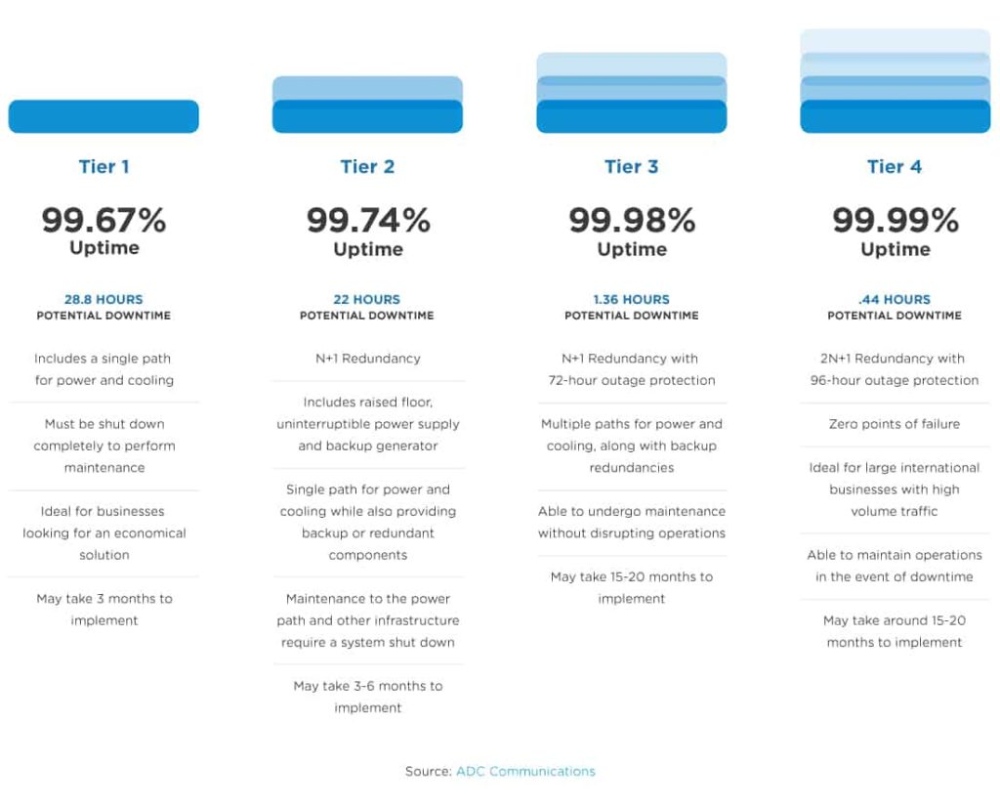
Summary comparison table of Data Center levels according to UPTIME TIER standard
- Tier 3: This is the high tier of data centers, with two separate and parallel paths for both power and cooling systems. It includes multiple redundant components and can be maintained without interrupting operations. Tier 3 boasts an uptime of 99.982%, permitting up to 1.6 hours of downtime per year. Tier 3 is commonly utilized by large enterprises or those with high requirements for system continuity.
- Tier 4: This is the highest tier of data centers, featuring two separate and parallel paths with dual-loaded (2N) components for both power and cooling systems. It includes extensive redundancy and is capable of withstanding unexpected events. Tier 4 boasts an uptime of 99.995%, allowing for up to 26.3 minutes of downtime per year. Tier 4 is typically used by very large enterprises or those with extremely high uptime requirements.
Analysis of Tier 3 data center
A Tier 3 data center needs to meet several critical requirements, including:
Network Operations Centers (NOC):
- Managing and controlling of the network, electrical, cooling, fire suppression, and security systems within the data center.
- Utilizing the Multi Router Traffic Grapher (MRTG) Network Monitor to ensure network system readiness, monitor access traffic and detect changes in connection status.
- Implementing surveillance cameras connected to a Digital Video Recorder (DVR) for monitoring both inside and outside the data center.
- Using Network Management Systems (NMS) to monitor the operational status of network devices, servers and transmission parameters.
- Assisting customers with allowance of remote monitoring and access to servers without the need to physically visit the data center.
- Tracking and reporting environmental metrics such as temperature and humidity at specific locations within the data center to assist technicians in adjusting the air conditioning system accordingly.
Inside a Tier 3 standard data center
Redundancy capability:
- Availability of 1+1 backup power generators with separate fuel tanks to ensure uninterrupted operation.
- A Tier 3 data center requires a minimum of N+1 redundancy for devices such as transformers, uninterruptible power supplies (UPS), power generators, and primary communication cables.
- Capability to perform maintenance at any time without disrupting services.
Cooling system:
- Ensuring precise humidity control with an error margin of no more than +/-5%.
- Ensuring accurate temperature control with an error margin of no more than +/-1°C.
- Connecting to the network and the current building management system (BMS).
- Monitoring air filtration and adjusting fan speed.
- Operating continuously and stably 24/7.
- Reducing noise through sound absorption rather than sound reflection.
Tier 3 Data Center in Saigon Hi-Tech Park – 1Hub Data Center
1Hub Data Center – Ho Chi Minh City Hi-Tech Park data center meets Tier 3 standards
Overview of Saigon High-Tech Park Data Center – 1Hub Data Center
1Hub Data Center is a Tier 3-certified data center, developed by Singapore’s Worldwide DC Solution, situated within Integrated Business Park OneHub Saigon. It is designed to offer services for server leasing, rack cabinets, data center space, and data center management for businesses. With an investment of over $70 million, 1Hub Data Center is expected to be one of the leading data centers in Ho Chi Minh City, catering to technology businesses looking for long-term development in Vietnam.
Special points at 1Hub Data Center
Key Features of the Tier 3 data center Saigon Hi-Tech Park:
- International standard scale: 1Hub Data Center is a Tier 3 data center, meticulously designed and constructed to strict technical standards. The project is located in Tower 7 with a total floor area of up to 18,000 square meters and a height of 55 meters. The data center is set to become fully operational by early 2025.
- Goals and impact: The objective of the data center in Saigon Hi-Tech Park is to contribute to the advancement of the digital economy and the Industry 4.0 revolution in Vietnam. The data center will serve customers in the digital economy and financial services sectors. Additionally, it will contribute to the growth of the business community within the Integrated Business Park OneHub Saigon and Saigon Hi-Tech Park.
- Facilities and location: 1Hub Data Center is situated within OneHub Saigon Business Park, a campus with comprehensive amenities. It is not just a data center but also one of the seven Grade A office buildings within the business park providing premium amenities on the premises, creating a favorable environment for technology businesses and long-term investment.
OneHub Saigon – The location of the Tier 3 data center
For more information: 1Hub Data Center – A $70 Million data center in Saigon Hi-Tech Park
Conclusion
1Hub Data Center is a modern and reliable data center in Saigon Hi-Tech Park, adhering to uptime Tier 3 standards in design and operation. The data center provides secure, efficient, and flexible data storage and processing services for businesses and organizations in the digital age. Situated within the Integrated Business Park OneHub Saigon, 1Hub Data Center also serves as a source of inspiration and crucial support for innovation and creativity in the technology sector. 1Hub Data Center is a clear example of the combination of advanced technology and innovation, creating an ideal environment for research, development, and innovation.
You can read more news about OneHub Saigon here.

